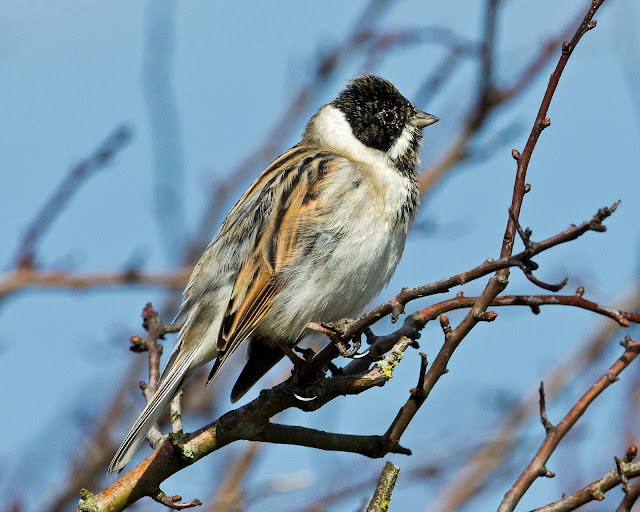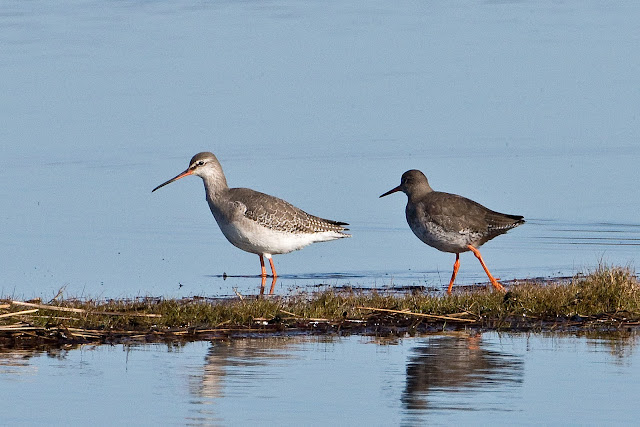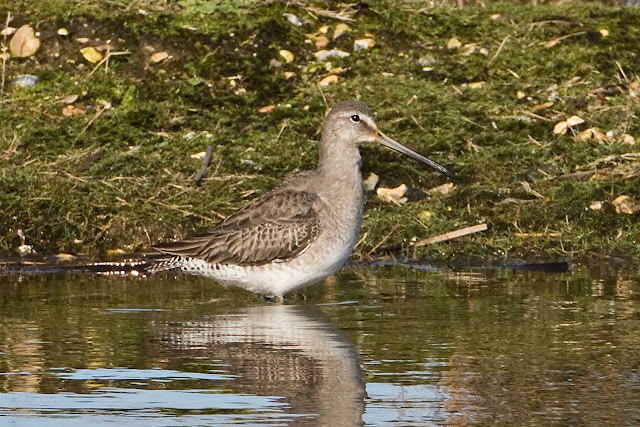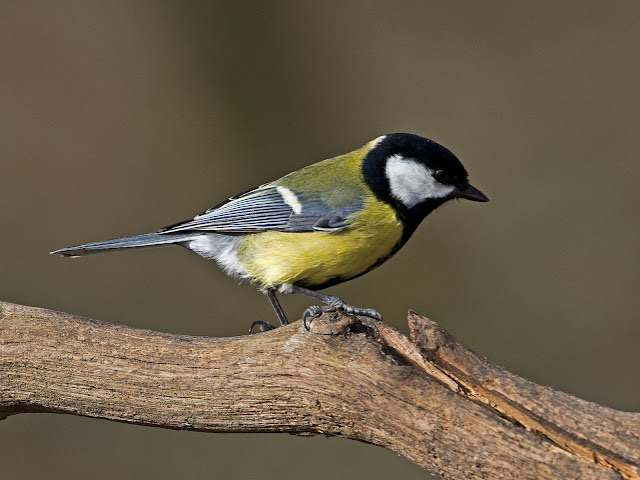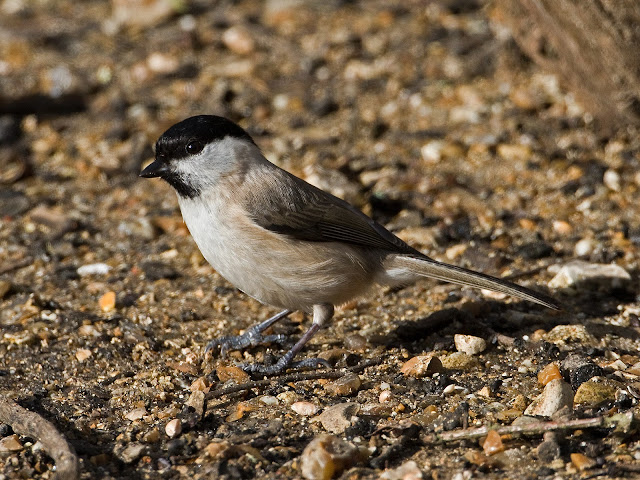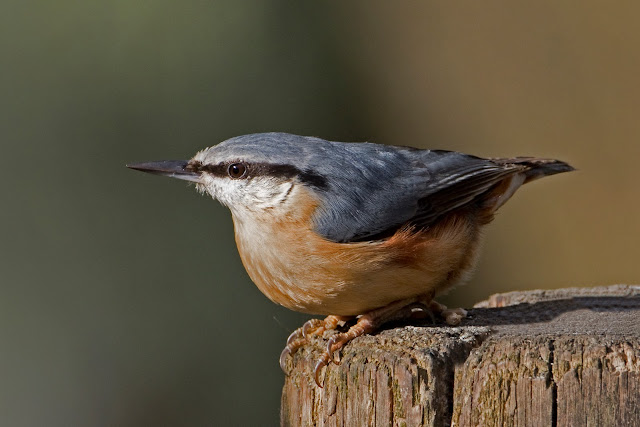My blogs seems to have been mostly about Owls of late but then who could resist the opportunity to photograph this pair of Little Owls? Dave certainly couldn't and you will see an almost identical set of pictures on his blog. All except for the Firecrest that is and I will get on to that later.
This now looks like a possible nesting pair so forgive me but I am not going to publish any details of their whereabouts.
Later we went to Chichester Gravel Pits to look for the Red-crested Pochard. They were there, on Ivy Lake, but staying well hidden under overhanging willows on the far side of the lake. My thanks to Sarah for putting us onto them, I don't think that we would have found them without her assistance.
With a White-fronted Goose on East Lake, the area became a bit like a birding reunion, with a lot of old faces and a newly shorn Bart Ives (not looking quite so Organic now) turning up to view the birds.
 |
| White-fronted Goose |
The Great Crested Grebes seem to have suddenly developed their breeding plumage. This is a bird that we tend to ignore for most of the year and then, with a chance of seeing a Weed Dance, they become the centre of attention for a short period. These two looked as though they would kick off but then seemed to loose interest and drifted away.
 |
| Great Crested Grebes |
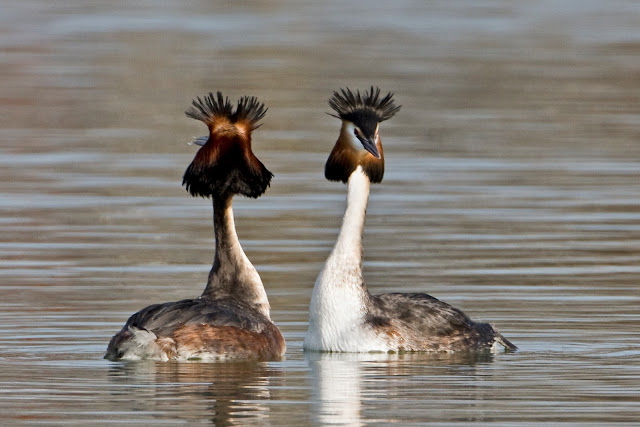 |
| Great Crested Grebes |
We then decided to head over to Arundel and visit the Wetland Centre. I still haven't managed to get a decent picture of a Firecrest and this is one of the most reliable places for seeing them. There was a great looking bird feeding around some of the brambles with probably half a dozen or more photographers trying to get a picture of it.
Checking later, Trevor Guy, who we met there, and Dave seemed to have nailed it as probably did everyone else apart from me. Checking the back of the camera showed a lot of empty perches and blurred shots. The best I could manage was this head shot below. Better than nothing but not really the picture I was after.
 |
| Firecrest |
I suppose I shouldn't be too despondent, at least it's the head, I usually just get the rear end as it flies out of the picture.
One last shot. This is the Ashdown Forest Great Grey Shrike that I saw a couple of days ago. It was about a hundred metres west of the Long car park but very mobile. There were a lot of people and dogs walking in the area and it was avoiding these. You could probably get it down to about forty metres but any closer and it would fly.
If you want to see pictures of a much more obliging bird have a look at my November 2013 blog.
 |
| Ashdown Forest Great Grey Shrike |
Another great day for bird photography but there was a definite heat haze building this afternoon despite the chill in the air. That window of optimum lighting and clear air is all to brief.


























